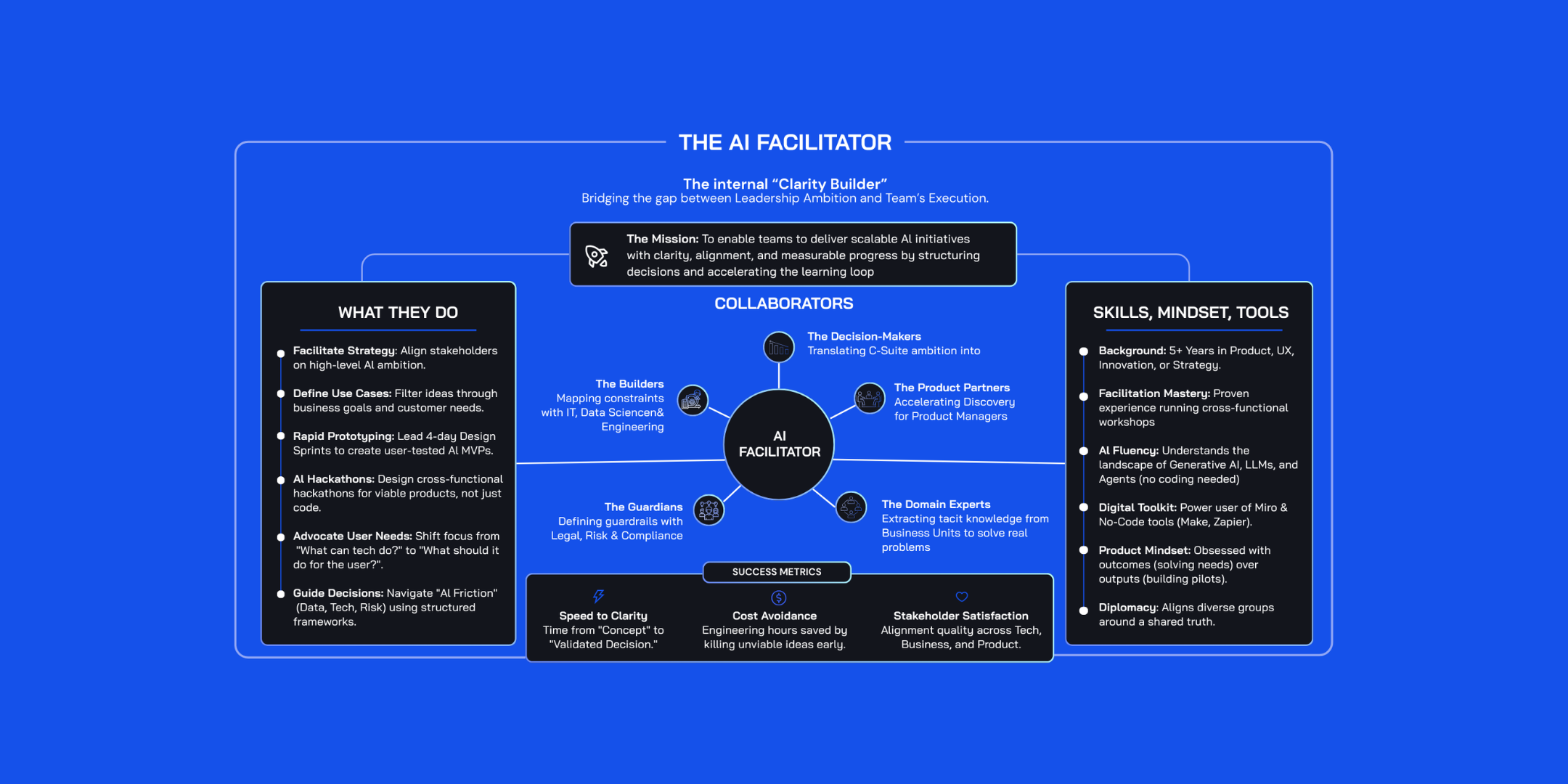RGAX - Building an Internal Innovation Powerhouse

The Challenge
At RGA, a leading life and health reinsurance company employing 4,000 people globally, a forward-thinking executive witnessed first-hand the transformative power of design sprints. Inspired by their effectiveness, he envisioned embedding design sprints as the core innovation framework throughout the organization. The challenge, however, lay in the sheer scale and geographic dispersion of the company's teams. How could this large, globally distributed corporation successfully adopt and integrate design sprints into its diverse and widespread operations? This was a question of change management on a grand scale, we at Design Sprint Academy helped them answer.
Can we roll-out an effective innovation framework at global scale?
The Solution
Design Sprint Academy stepped in to revolutionize RGA's innovation process. We adapted our design sprint methodology to suit RGA's distinct corporate structure, focusing on building a global innovation team equipped with the skills and tools to implement design sprints as their primary innovation framework.
From 2017 to 2022, we conducted comprehensive training sessions in London, Dubai, Toronto, Berlin, and remotely, especially during the pandemic, equipping their teams with an end-to-end innovation framework. Complementing our training, we supplied a suite of essential toolkits, enabling the practical application of the newly acquired knowledge. This ensured a uniform approach and consistent practice across RGA’s diverse global teams.
The Results
RGA has successfully adopted and scaled the design sprint-based innovation framework. They now have established a clear, fast, effective, and predictable innovation process, consistently delivering solid outcomes.
Moreover, this framework has evolved into its own distinct entity, known as "Life Design Sprints," further detailed on RGA’s blog.
The visionary behind this initiative, Richard Verdin, has seen his efforts come full circle. He proudly presented "Life Design Sprints" at Google’s Design Sprints for Change Conference in London. His keynote speech, aptly titled “Life in the Slow Lane,” showcased the transformative impact of design sprints in a traditionally conservative and rigid industry.
The Full Story
Inception
Back in July 2017, we were supporting a corporate venture builder with sprints to help them get through a tidal wave of projects. One of these ventures was within the reinsurance behemoth RGA which was looking to create a new consumer-facing product.
Our strategy was to employ a design sprint, enabling the team to develop and test a product concept with potential customers within just one week. To this end, a diverse team of experts was assembled to contribute to the nascent concept with their unique perspectives, knowledge and ideas. Design Sprint Academy was entrusted with preparing and facilitating the week-long workshops. Playing a pivotal role in this setup was Richard Verdin, Managing Director of RGAX, whose primary responsibility was selecting the most promising ideas for prototyping and testing.
So, the stage was set for innovation: we had a team with diverse skills, an experienced facilitator, and a strong decision-maker. This approach was completely new for them, and expectations were cautious. Everyone, except perhaps us at Design Sprint Academy, was unsure what the outcome would be. It was a step into unknown territory, but one we were ready to navigate.
Following the design sprint approach - a structured journey with planned agendas and exercises, designed to encourage quick decisions - the team had developed a prototype and tested it with customers in just five days.
That was a radical departure from how large organizations work.
Usually execs, business leaders, and those who have the ideas at the top ordinarily put other people in charge of delivering them. Now they were required to be present over 5 days for the design of a prototype of their ‘idea’.
And this works as sign-off loops are eradicated with decision-makers present day-to-day. Also teams get the time and space to focus on one thing rather than being pulled in many directions and multitasking on several projects. The same amount of work in the regular corporate setting would have taken months instead of days.
Ultimately decision makers understand for themselves the viability of their initiatives quickly and cheaply. Our decision-maker, Richard, was no exception and immediately recognized the value of this new way of working and why it represented a compelling proposition:
- they gave ‘normal’ teams the ability to do what used to be the prerogative of agencies or large consulting firms.
- They empower internal teams to implement ’innovation methodology’ but without the jargon.
- They deliver decision makers with quick, cheap answers.
Convinced by the sprint's outcome, Richard's decision was clear:
We need to make Design Sprints our go-to for innovation.



.jpg)





